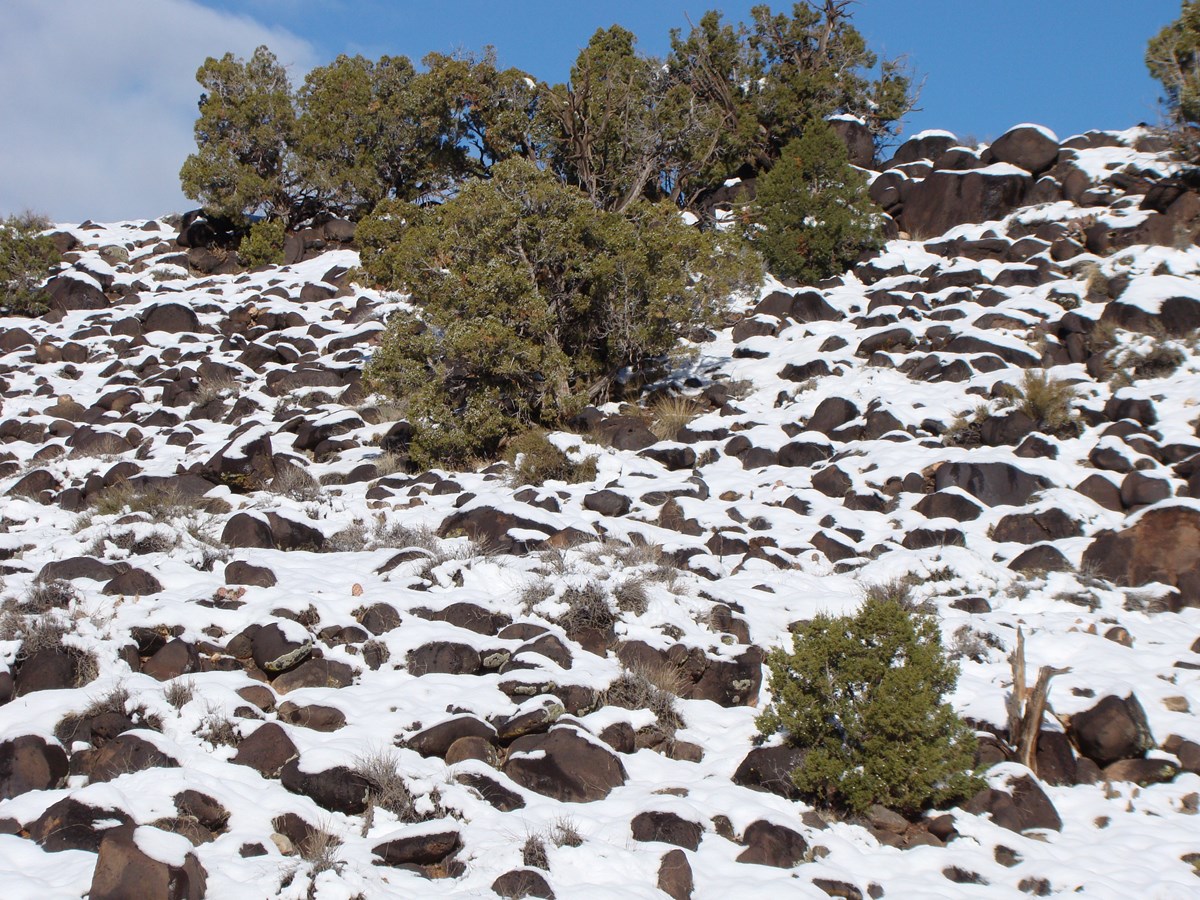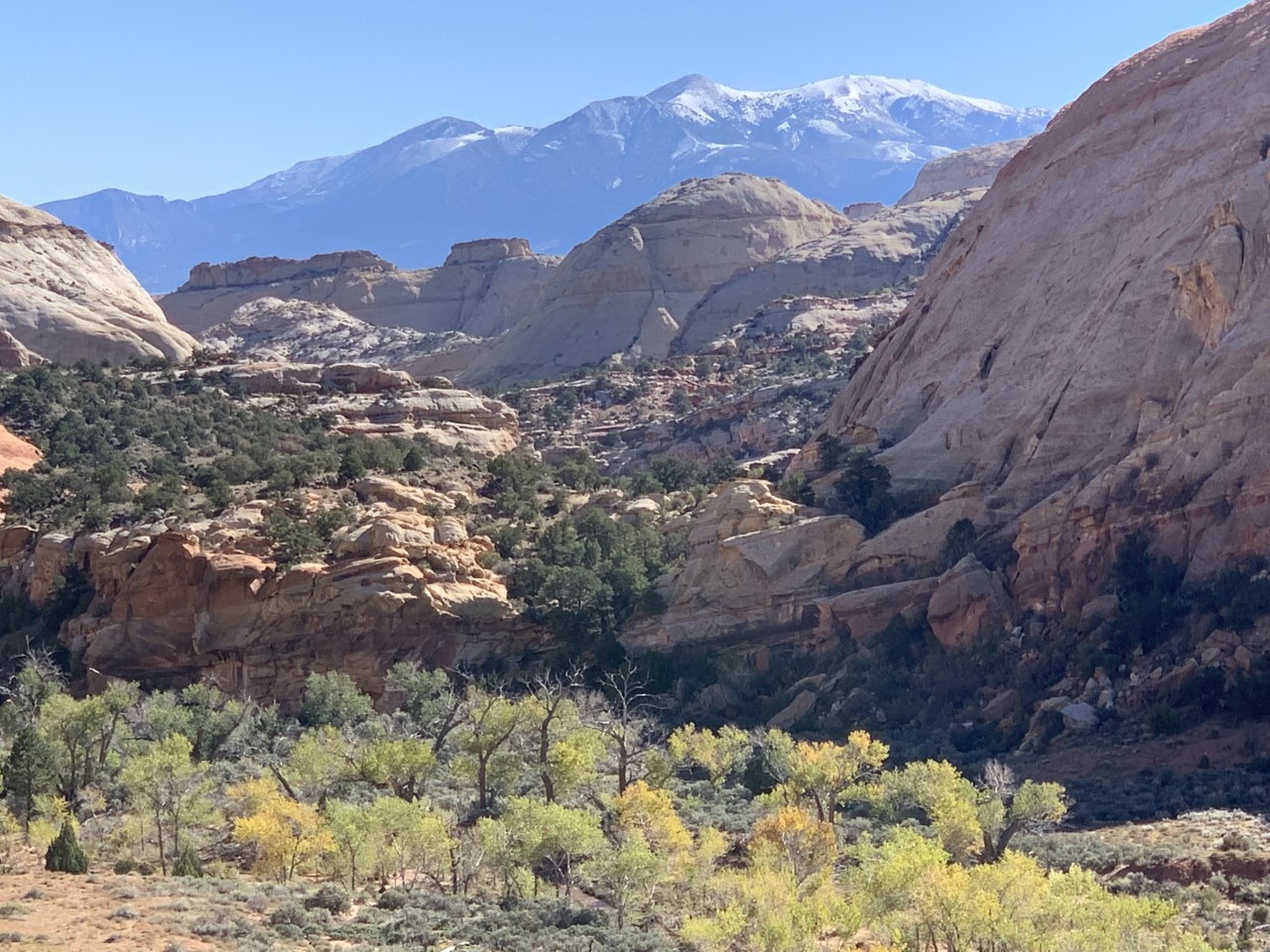Erosion in Pleasant Creek
Water continues to be the major erosional force, thanks to Pleasant Creek, which flows from Boulder Mountain to the west and joins the Fremont River around the community of Notom to the east. Pleasant Creek originates from a spring on Boulder Mountain, and like many of the bodies of water there, does not remain entirely above ground. Water makes its way through cracks in the igneous rock before returning to the surface as a creek.
Pleasant Creek experiences flash floods during summer monsoon rains, and these floods can overflow the banks, carrying sediments, rocks, trees, and other debris downstream. Clear flowing water has some erosional force, but it is magnified when sediment in the water grinds against and wears down the rock layers in the creek. Scientists estimate the erosional force and downcutting of the nearby Fremont River to be about 30 inches (76 cm) per thousand years, which is a fast rate of erosion for the Colorado Plateau.
Rockfalls are another sign of erosion, and in 2019, about 200 feet of vertical Wingate Cliff crashed to the valley floor, just east of the Field Station, along the trail to the petroglyphs. While walking through this section, please do not stop, as the cliffs still have many vertical fractures, and rockfalls can happen at any time. As Wallace Stegner wrote, “Geology knows no such word as forever.”



